This expedition focused on the sites left out of #56, which are all in downtown Berkeley. First up is the Whittier School, an elegant Classic Moderne building built in 1939. It closed in 1984 and became the Berkeley Arts Magnet School (it’s now a regular elementary school with an emphasis on arts education). It was extensively renovated in the early 90’s but managed to keep details like the vintage font building signage.
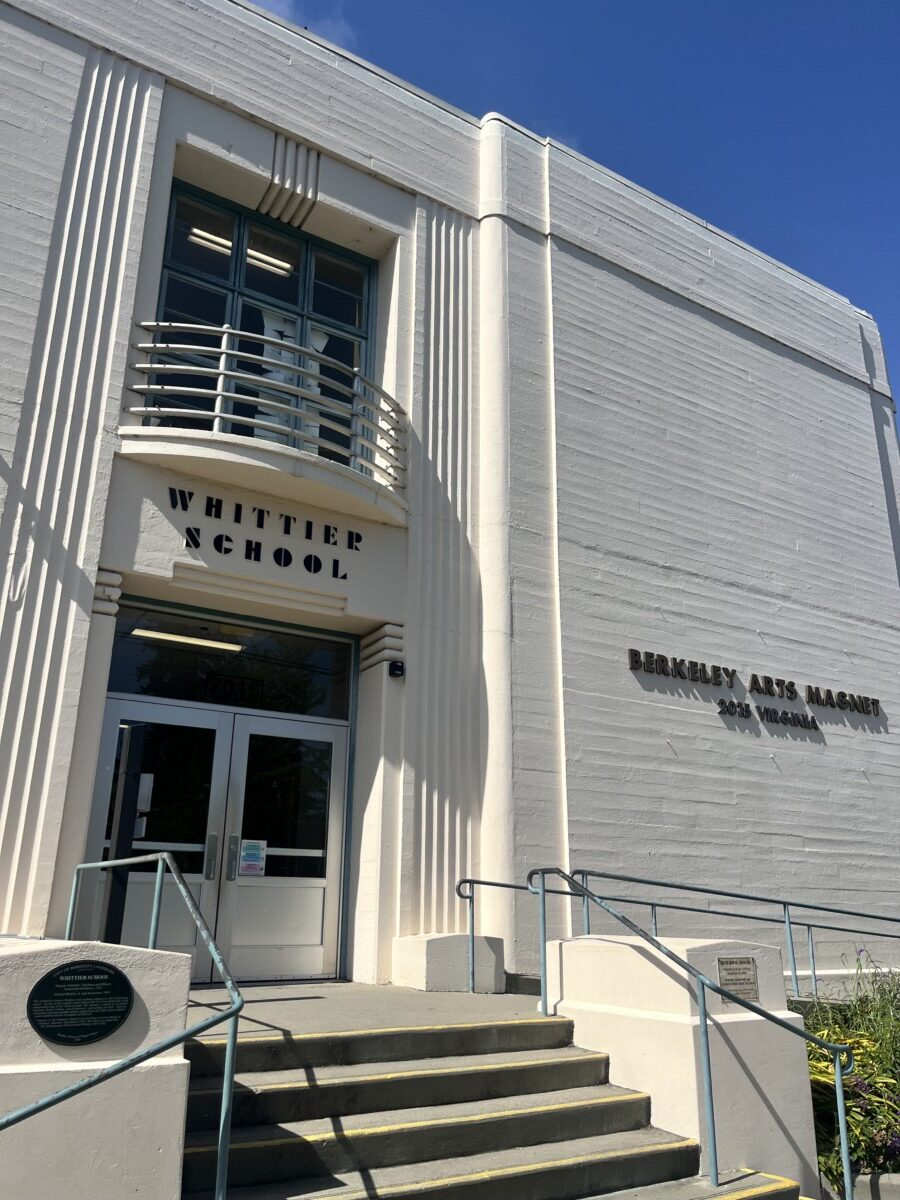
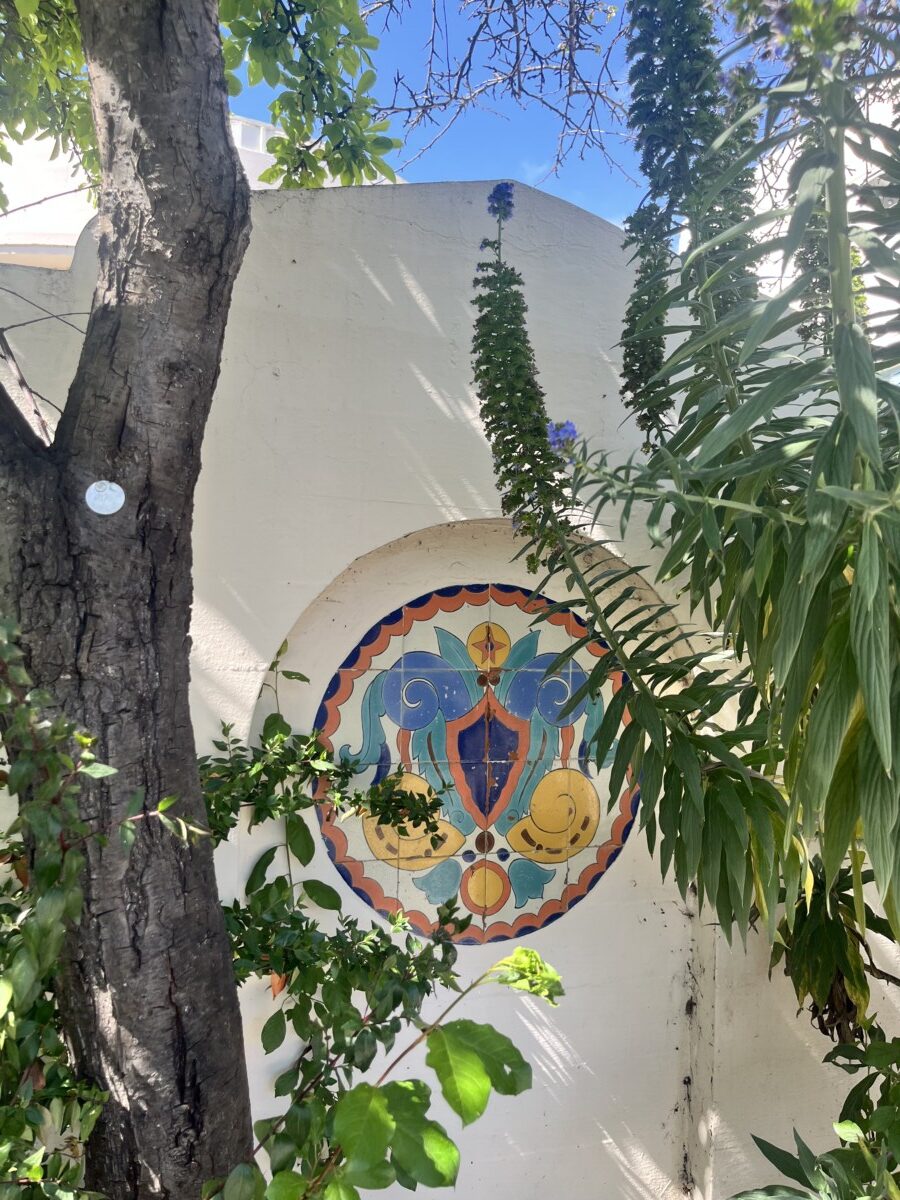
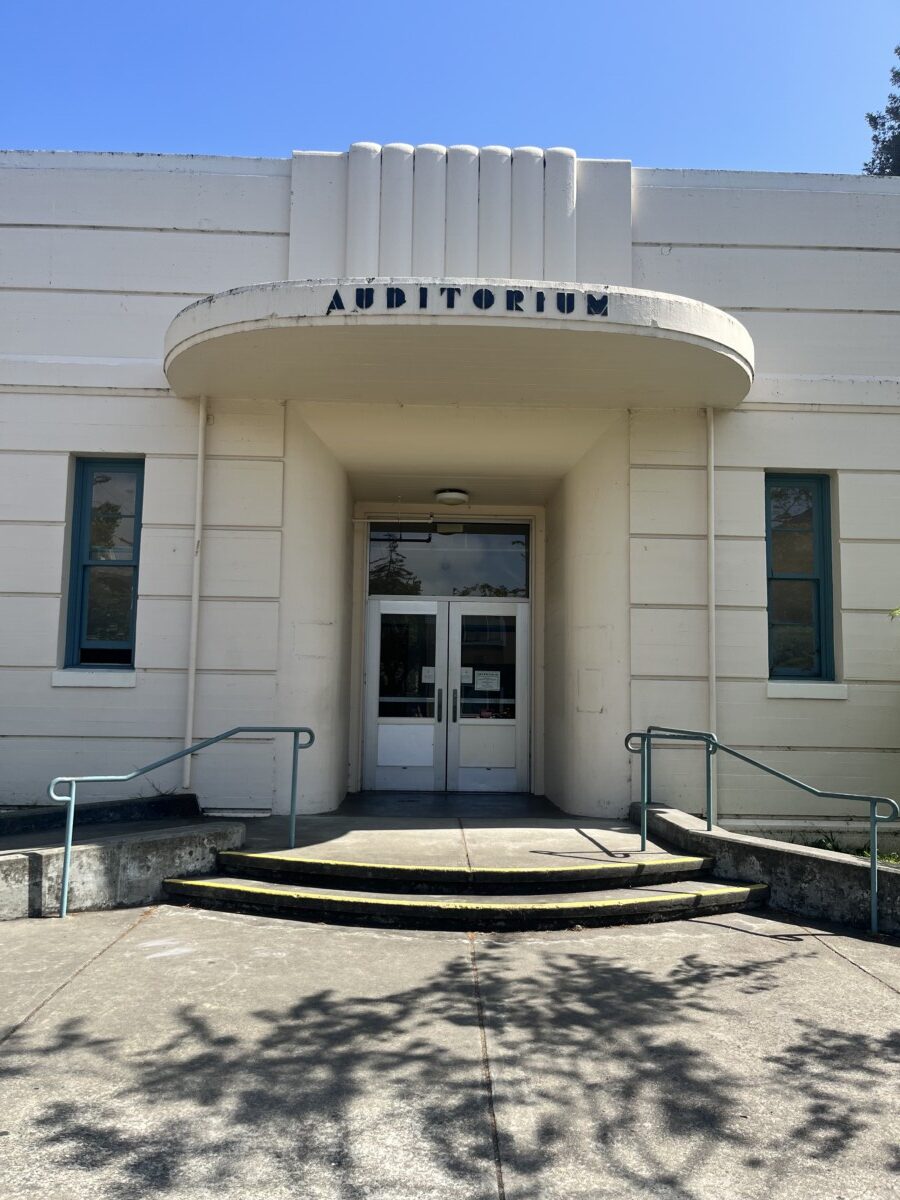
The next stop is another Moderne building, the former UC Press Building, also dating from 1939. I love this spiral staircase. I saw online that there’s a stained glass window in the stairwell, hence the orange glow on the wall. It’s now part of the Berkeley Art Museum, which was built around it. Looks like there was a plan to tear it down instead. Glad they didn’t!
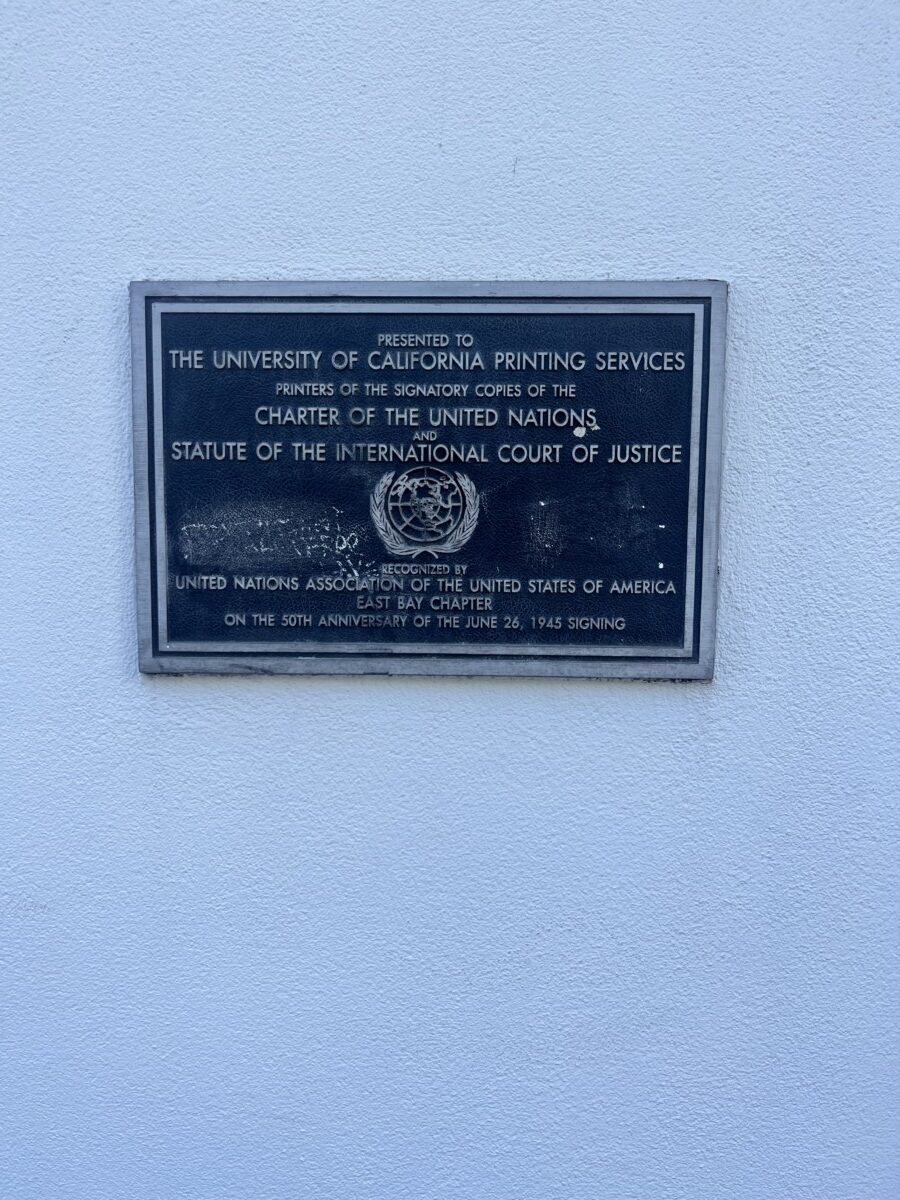
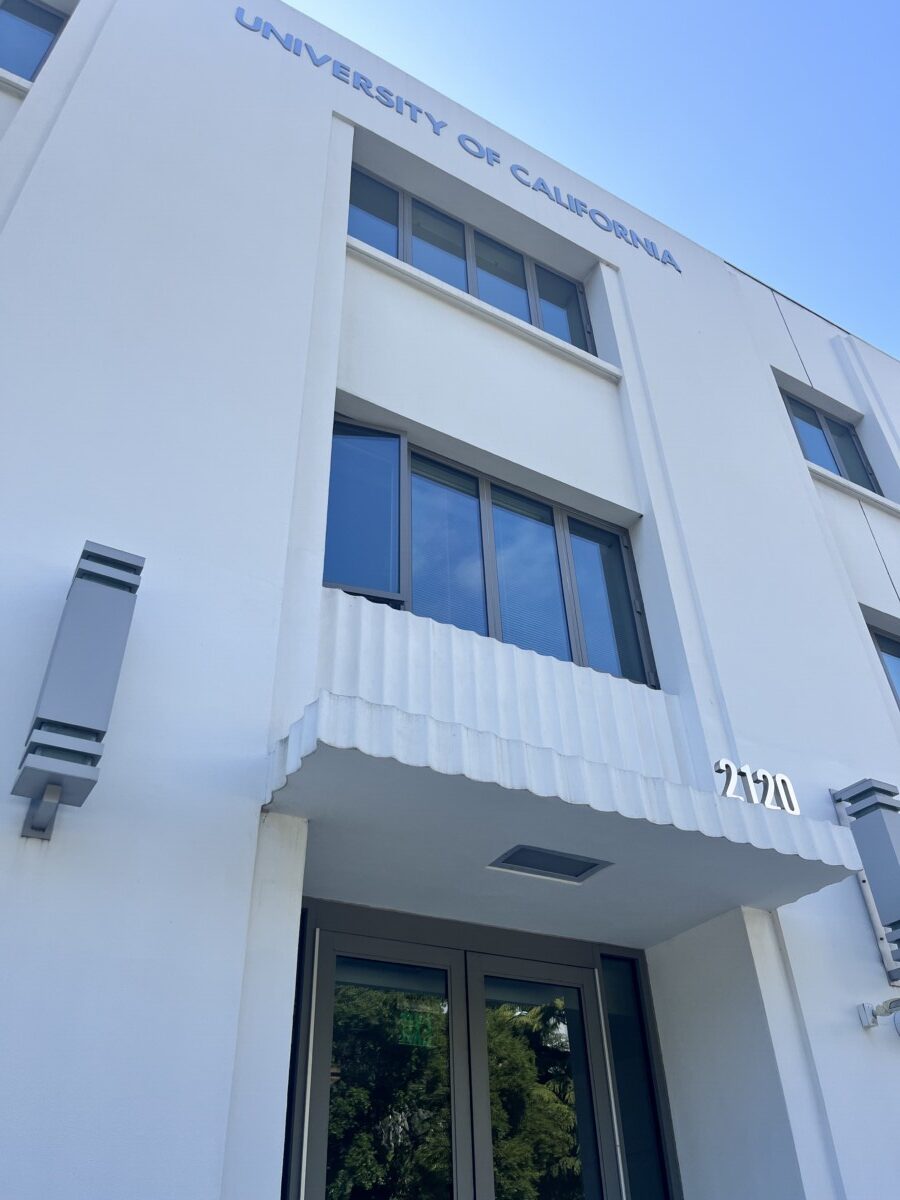
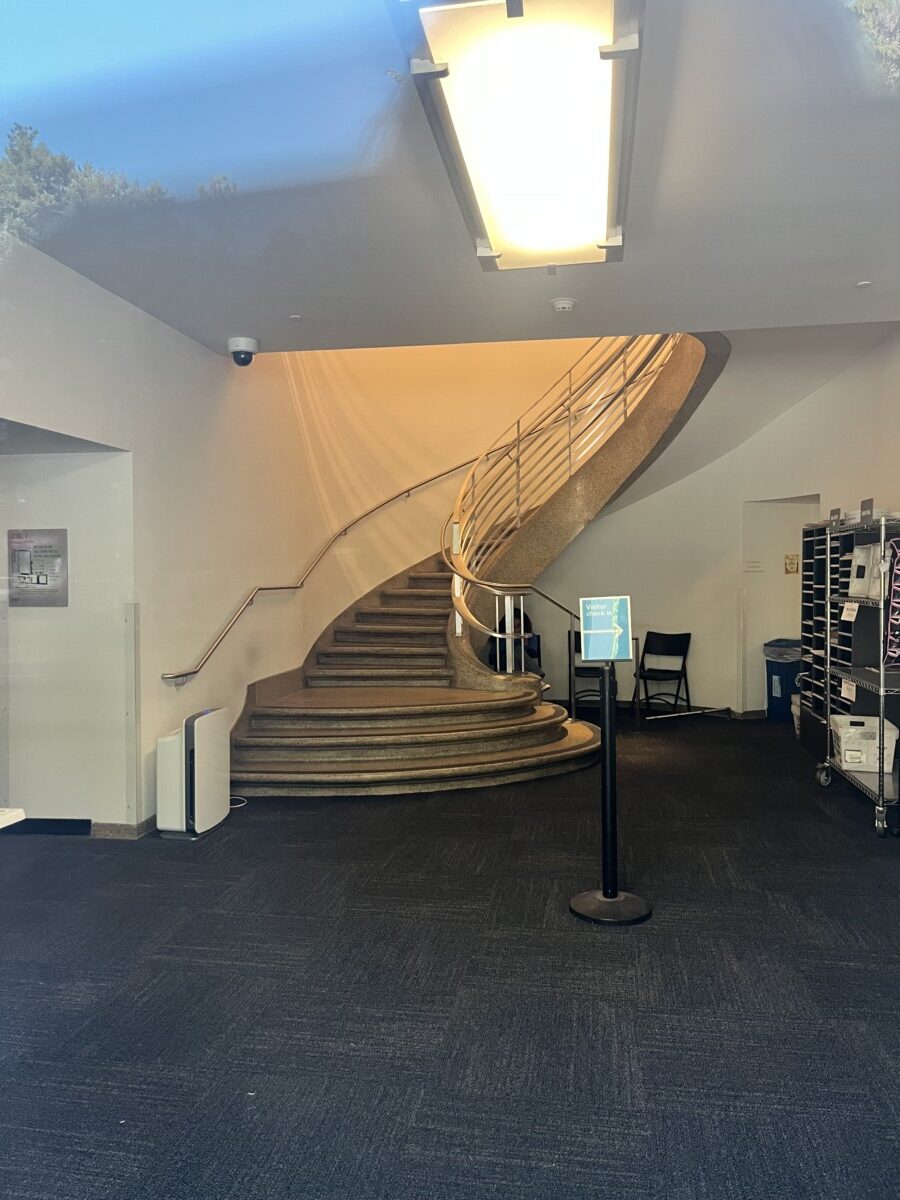
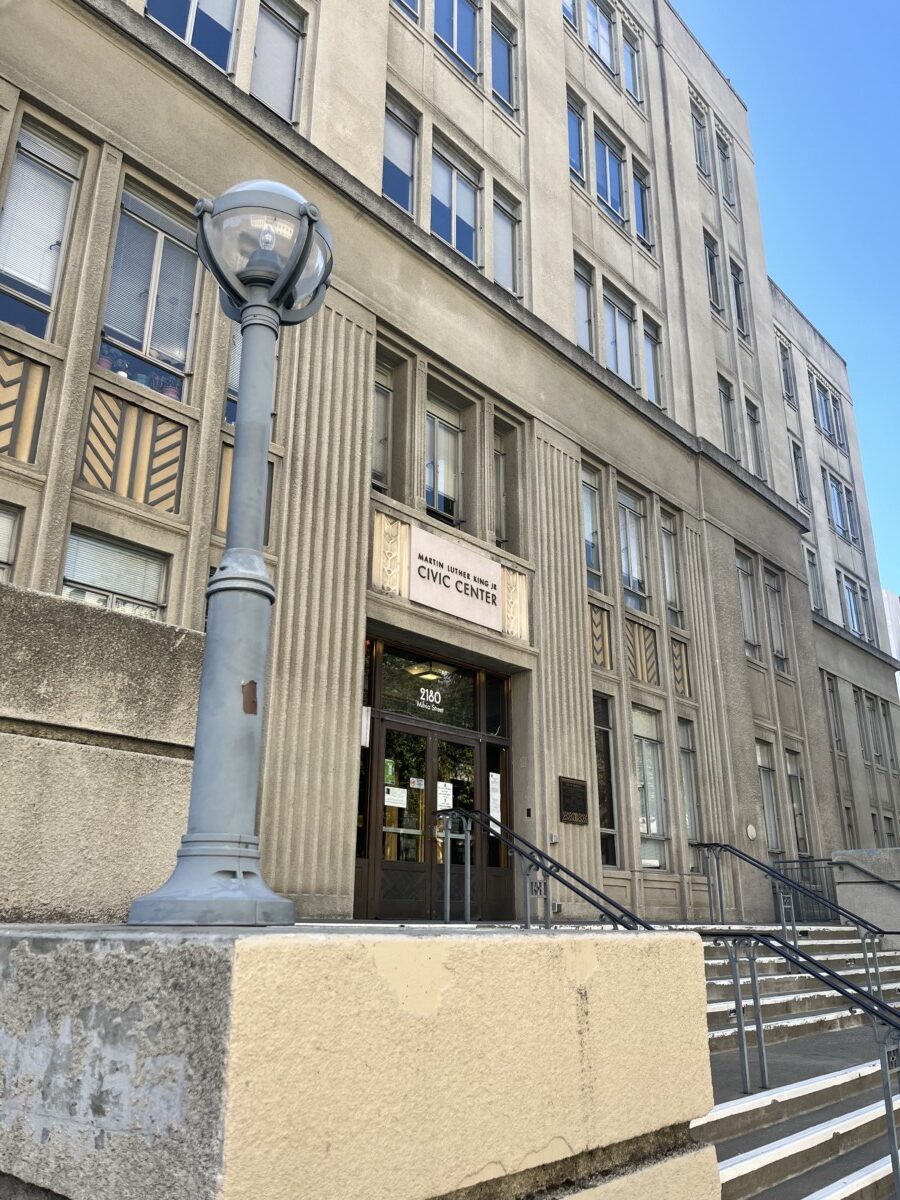
The MLK Civic Center is still another Moderne building constructed between 1938 and 1940 for the Farm Credit Administration. I peeked inside but what I could see of the interior looked pretty blah. Across the street is the post office, built in 1914. I love these old style post office boxes!
The mural surrounding the Postmaster’s former office was done by Suzanne Scheuer in 1936-37, called “Incidents in California History.” It features Luis Maria Peralta, the first local landowner whose Rancho San Antonio encompassed San Leandro, Oakland, Alameda, Emeryville, Piedmont, Berkeley, and Albany. Basically, the entire East Bay!
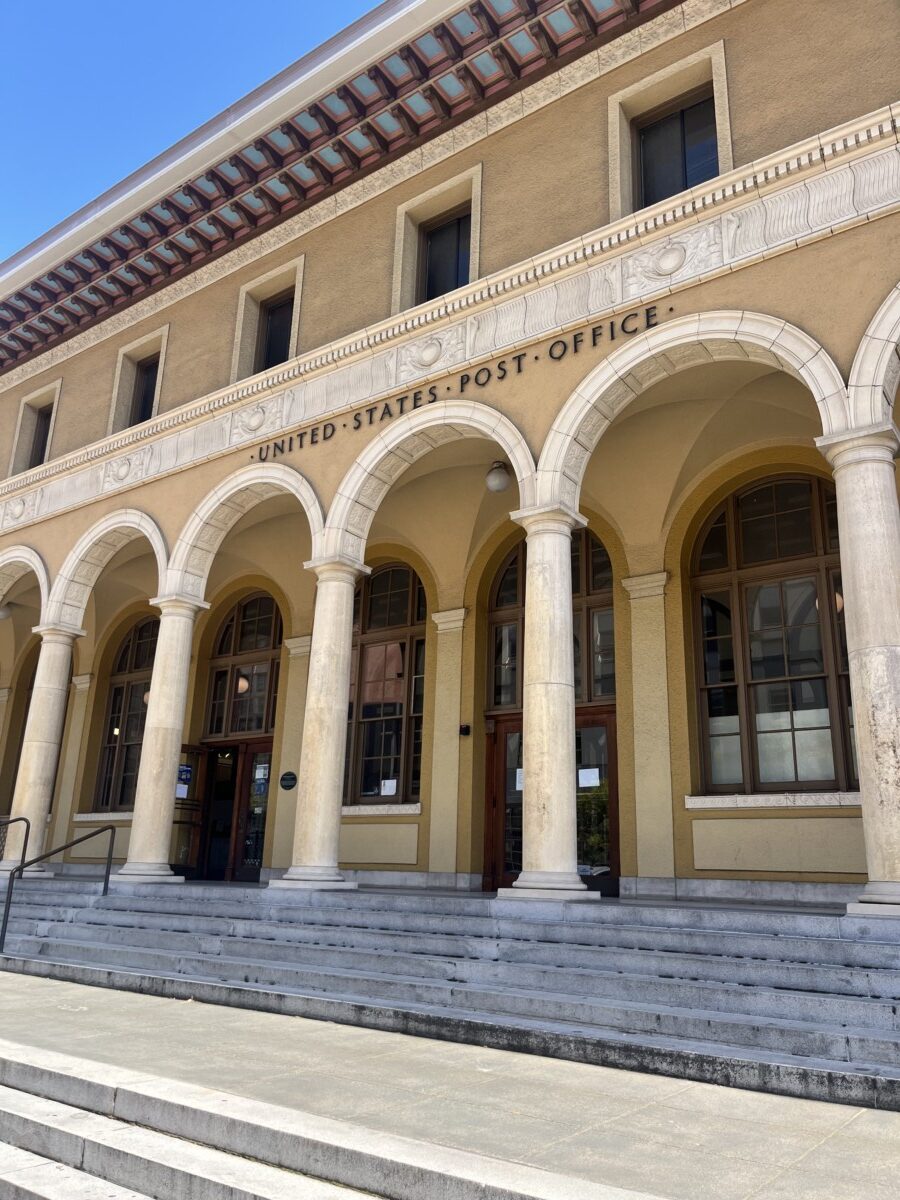
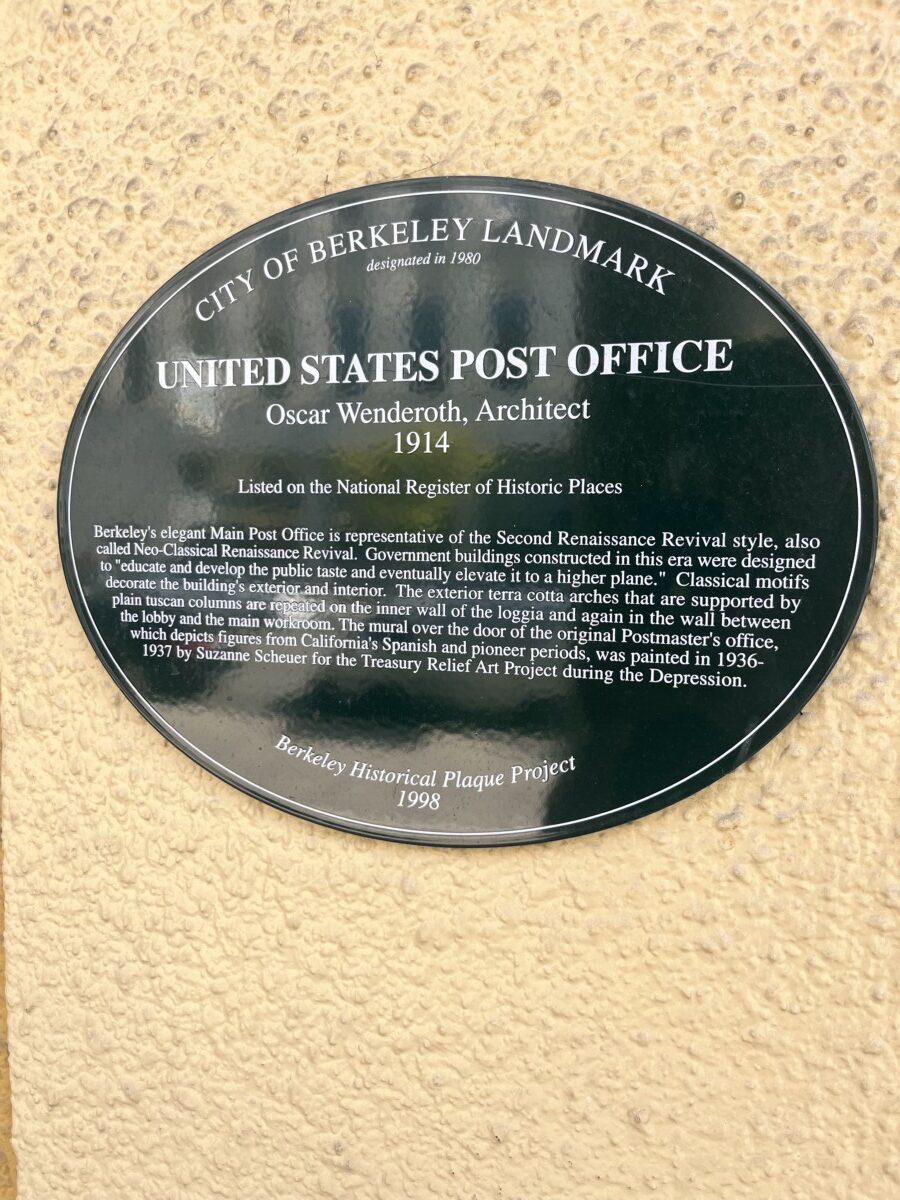
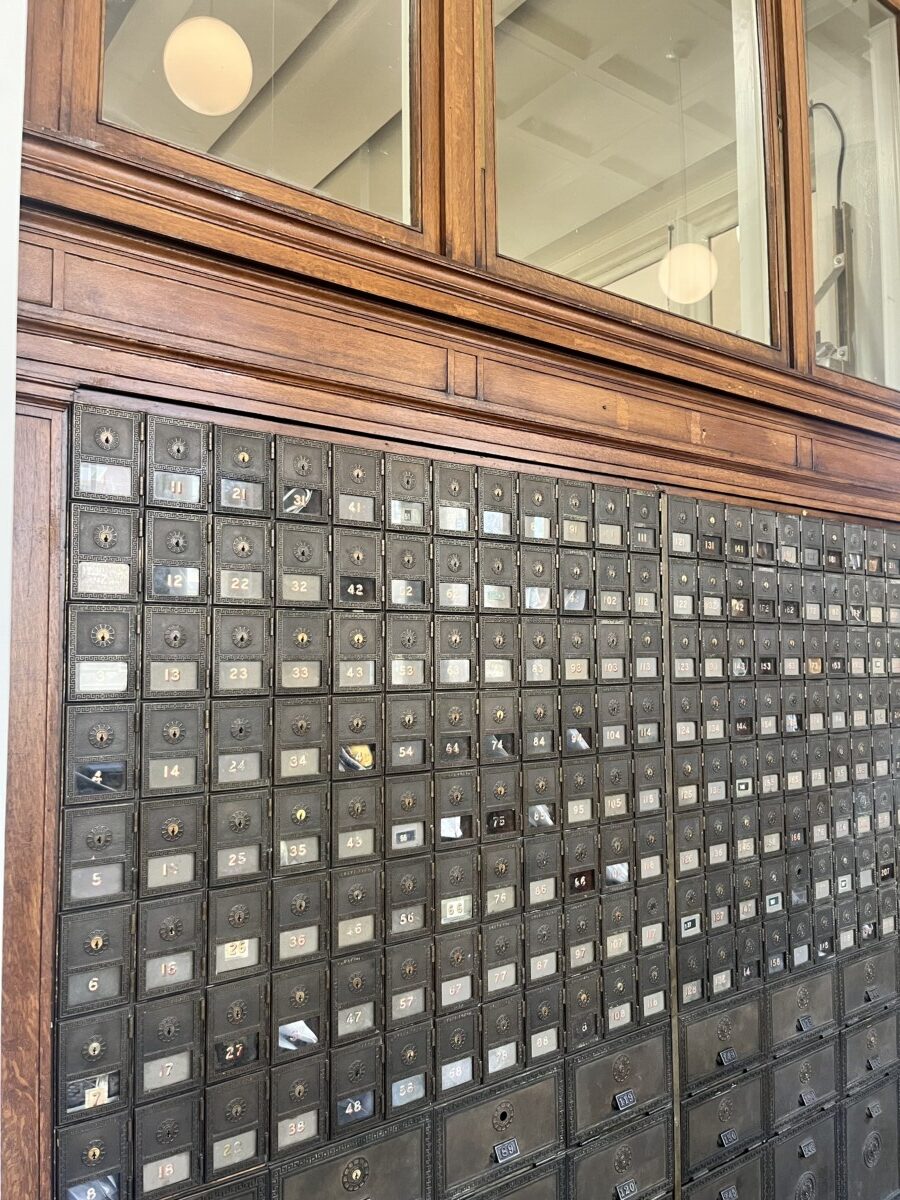
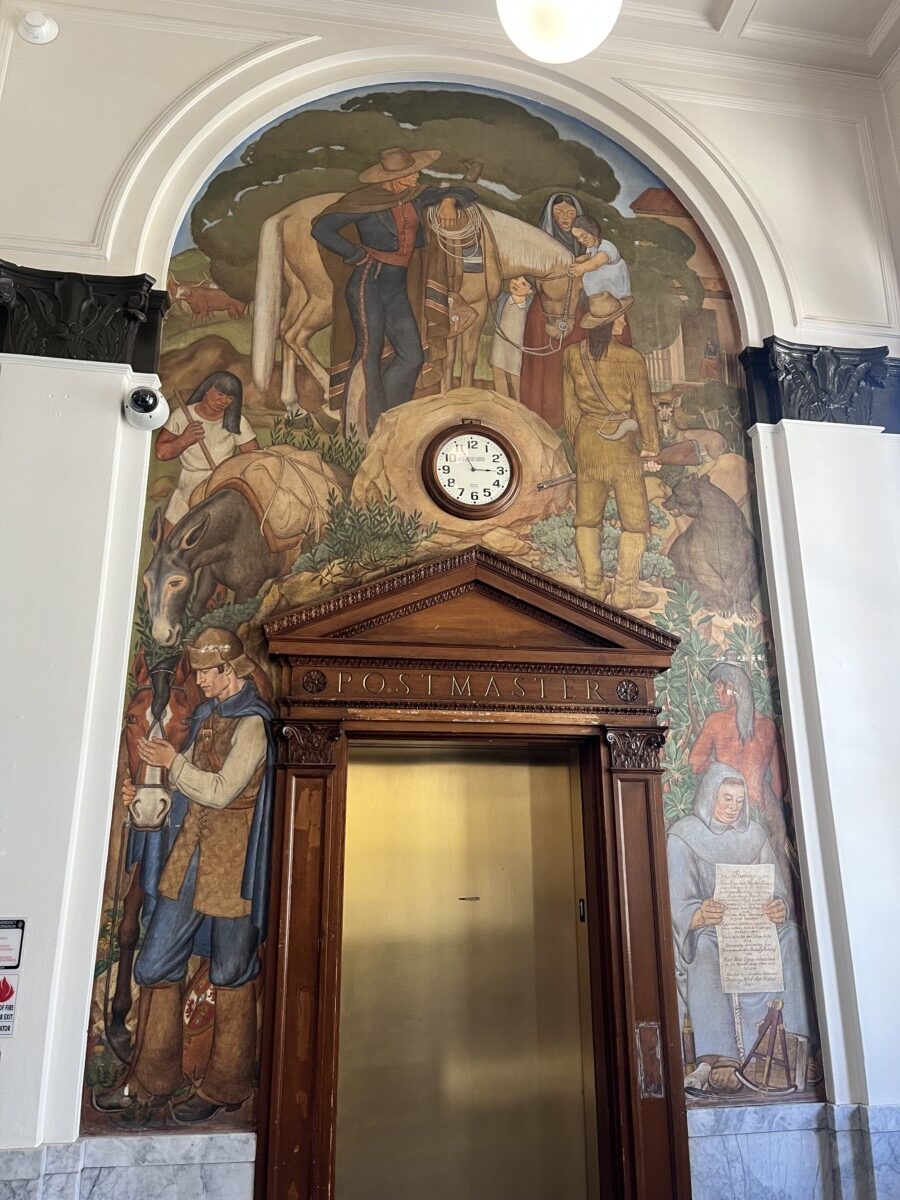
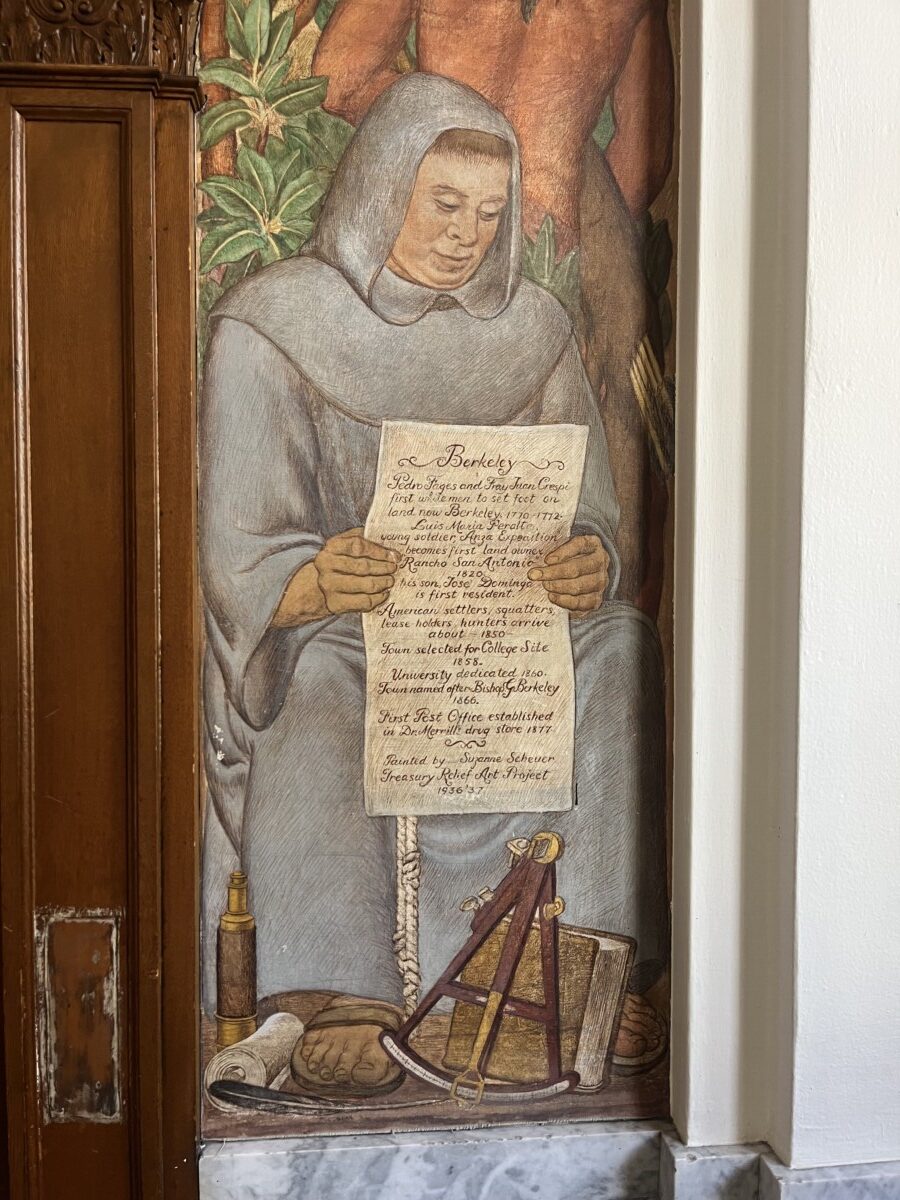

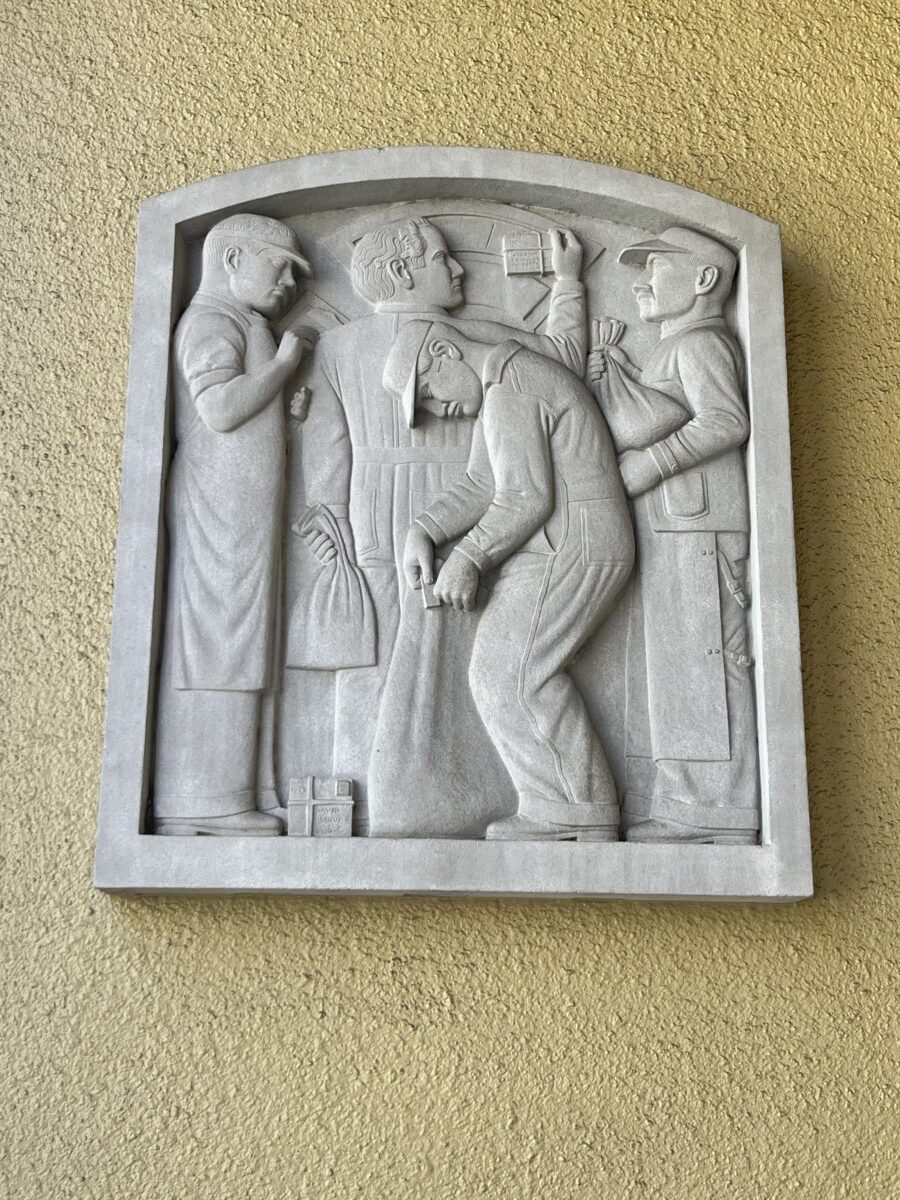
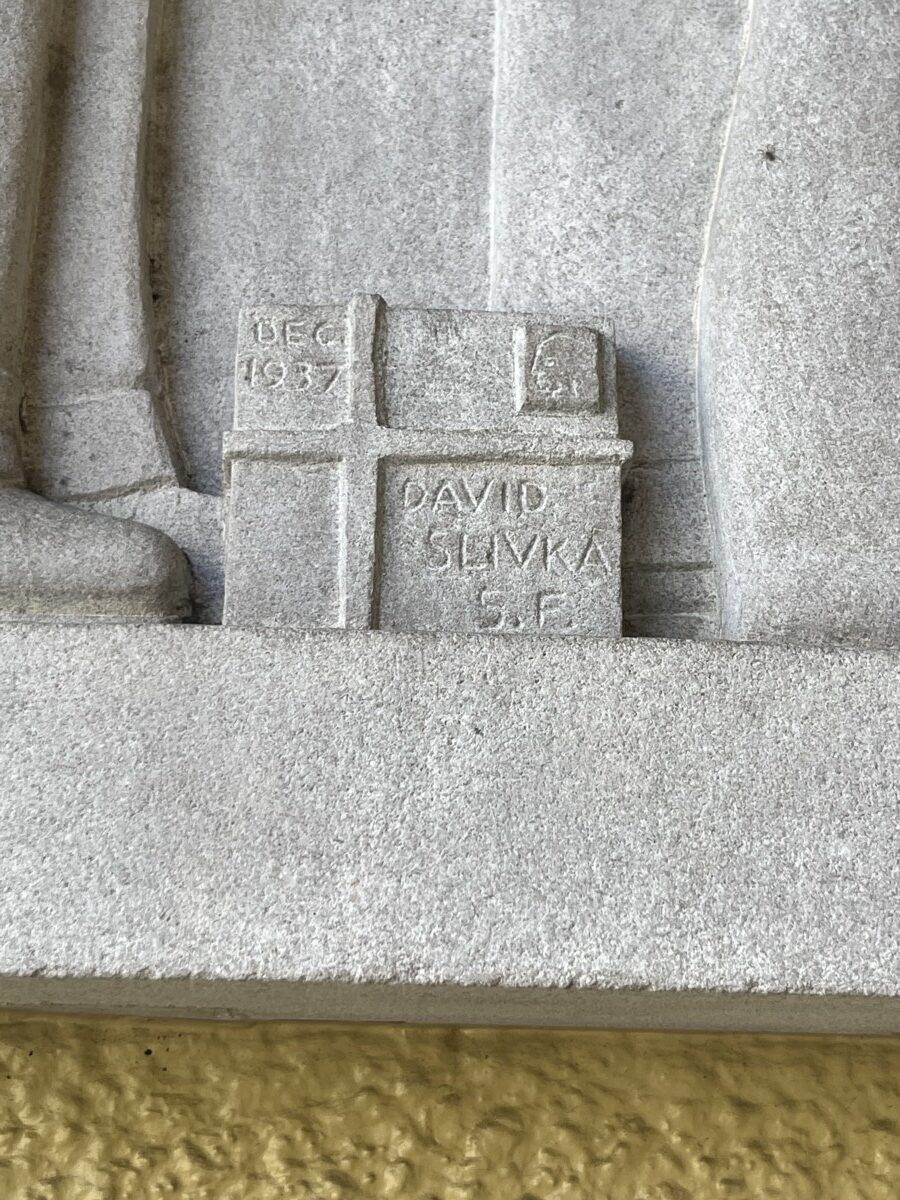
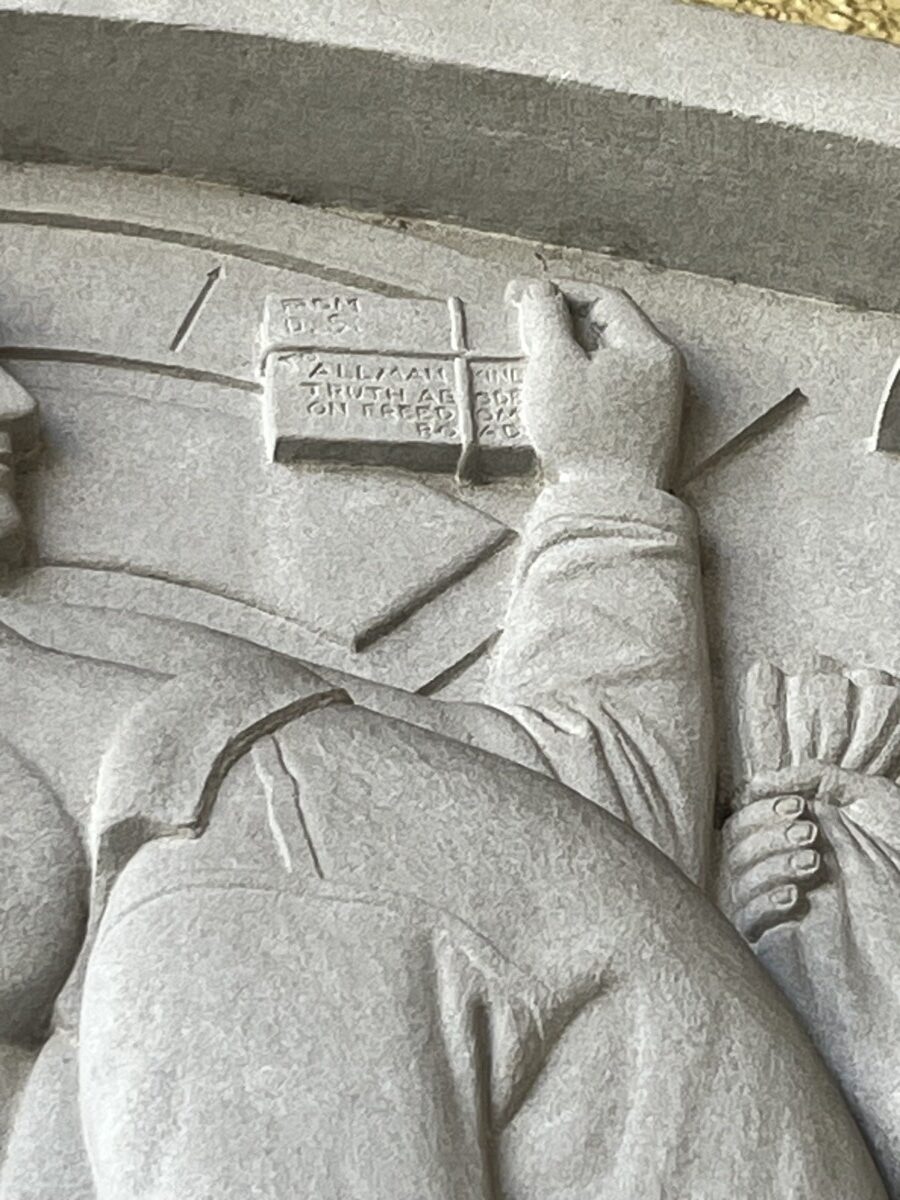
Scheuer also painted a mural at Coit Tower, which I visited during Expedition 2. I didn’t post photos of her work then (there was so much to see!) but here’s one I took of a section of her work “Newsgathering.”
On the building’s facade is a bas relief of postal activities. I like how the artist signed the piece on a stone package at the bottom. The letter at the top is addressed “To: All Mankind, Truth Abode on Freedom Road.”
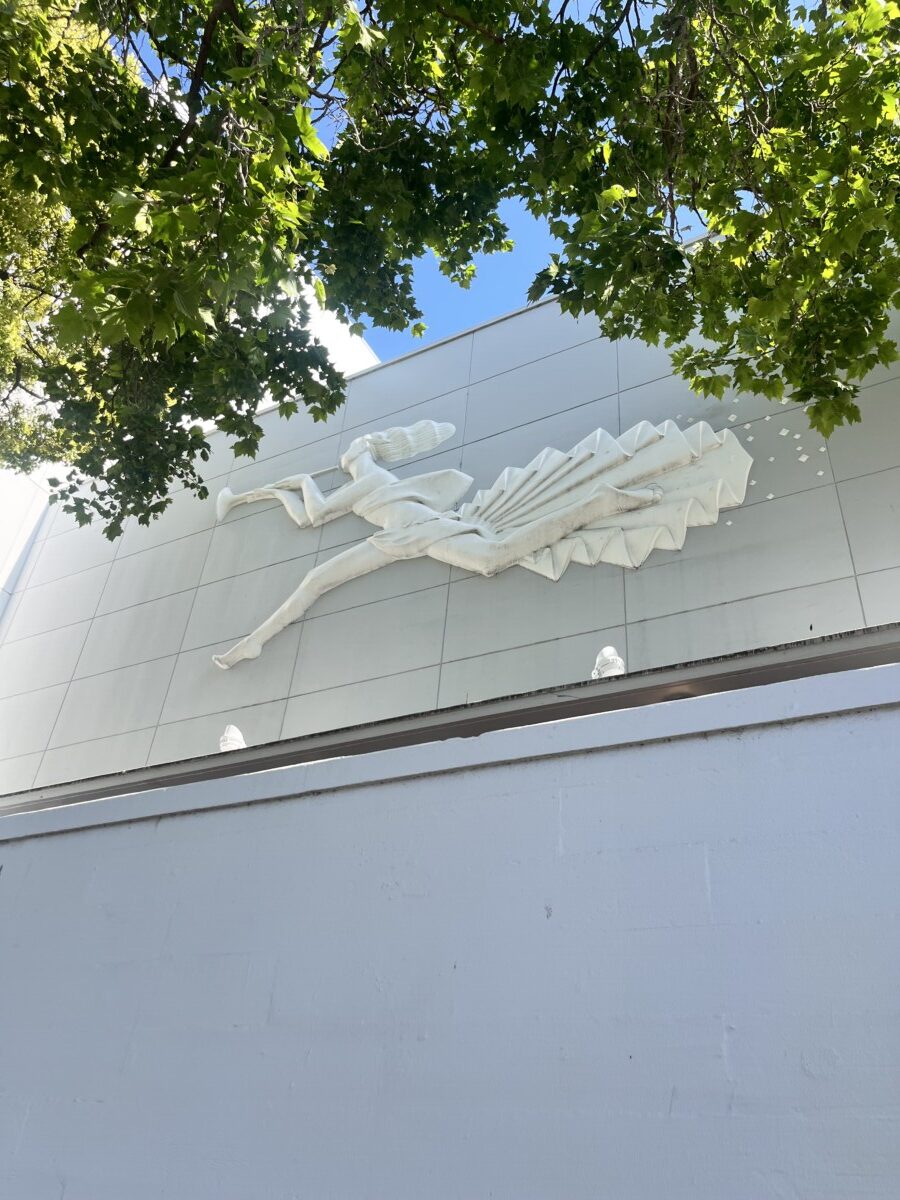
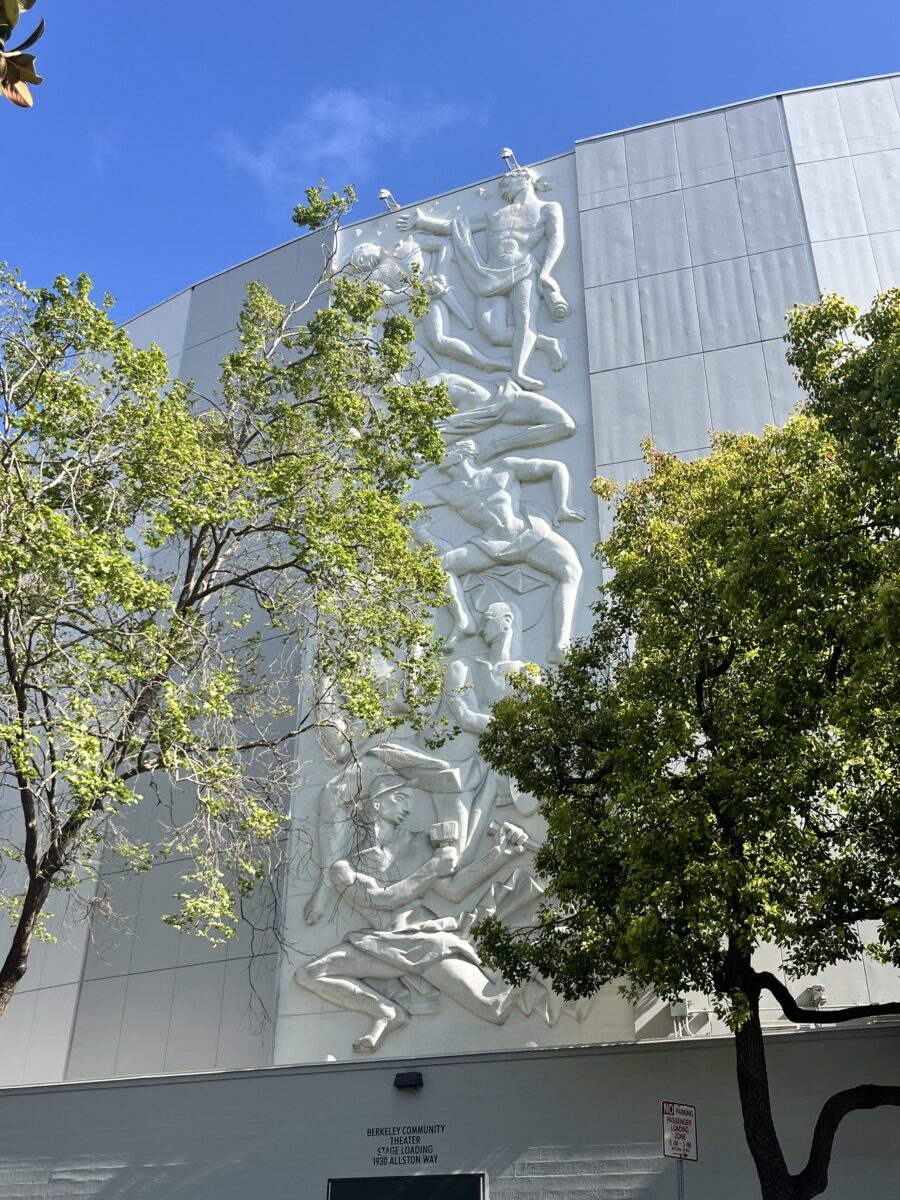
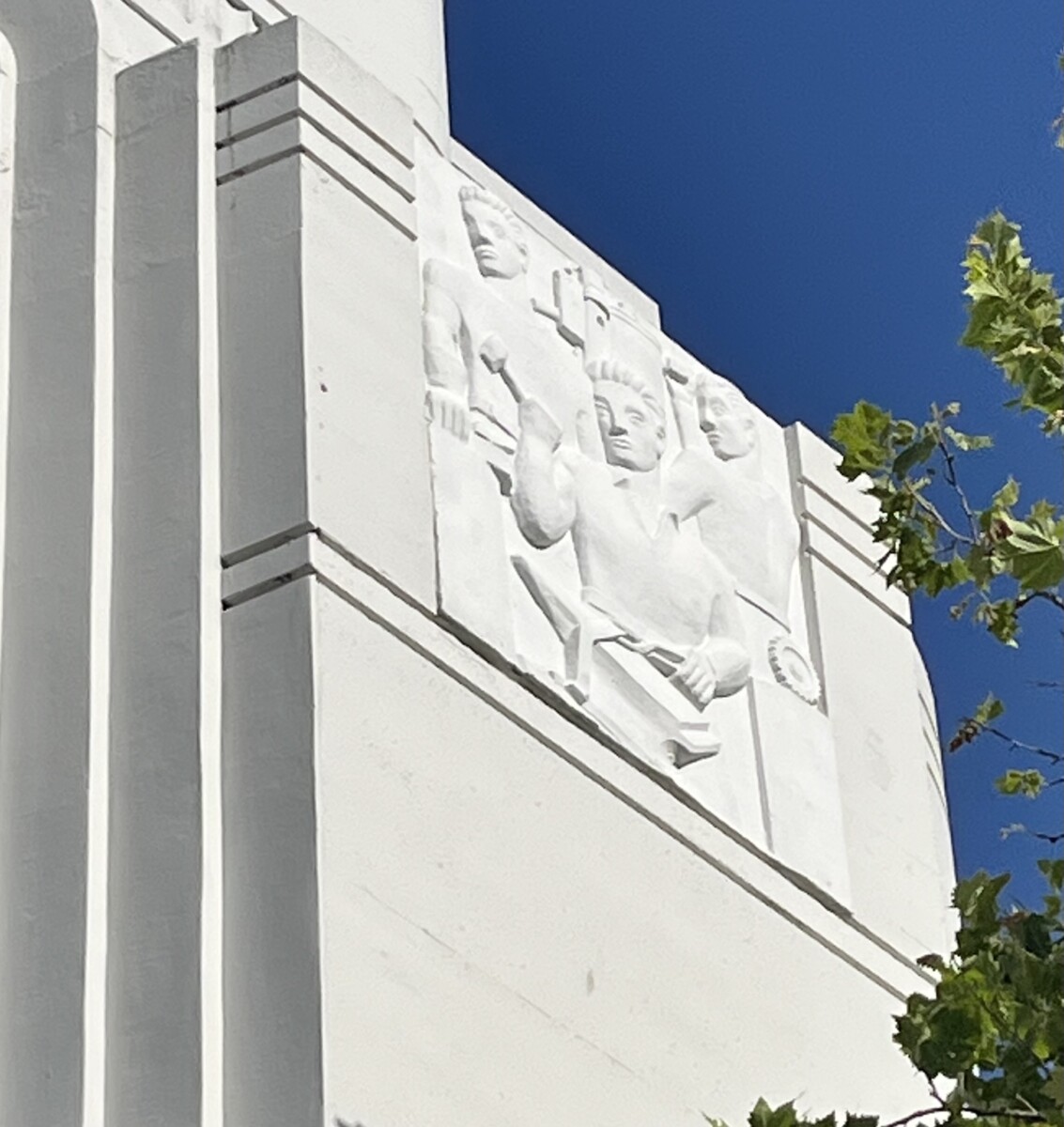
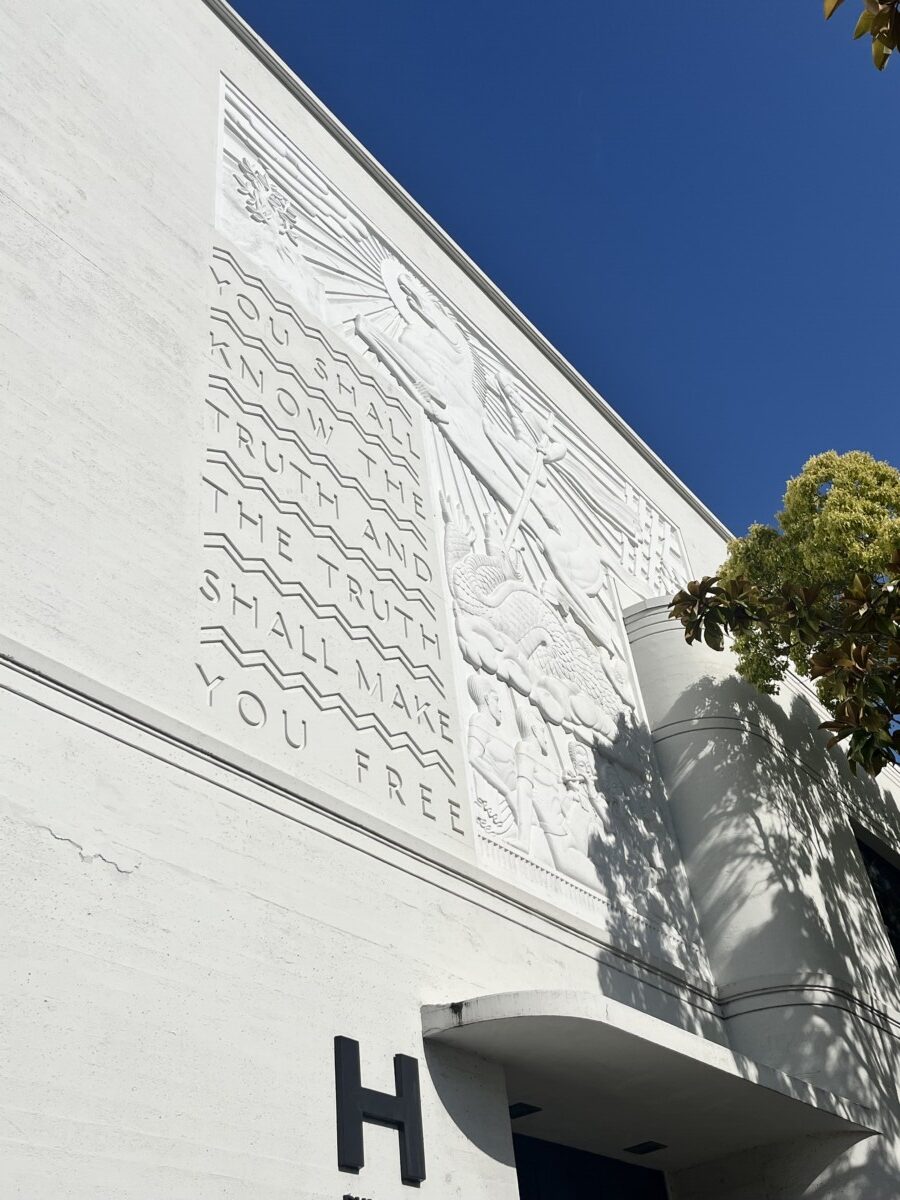
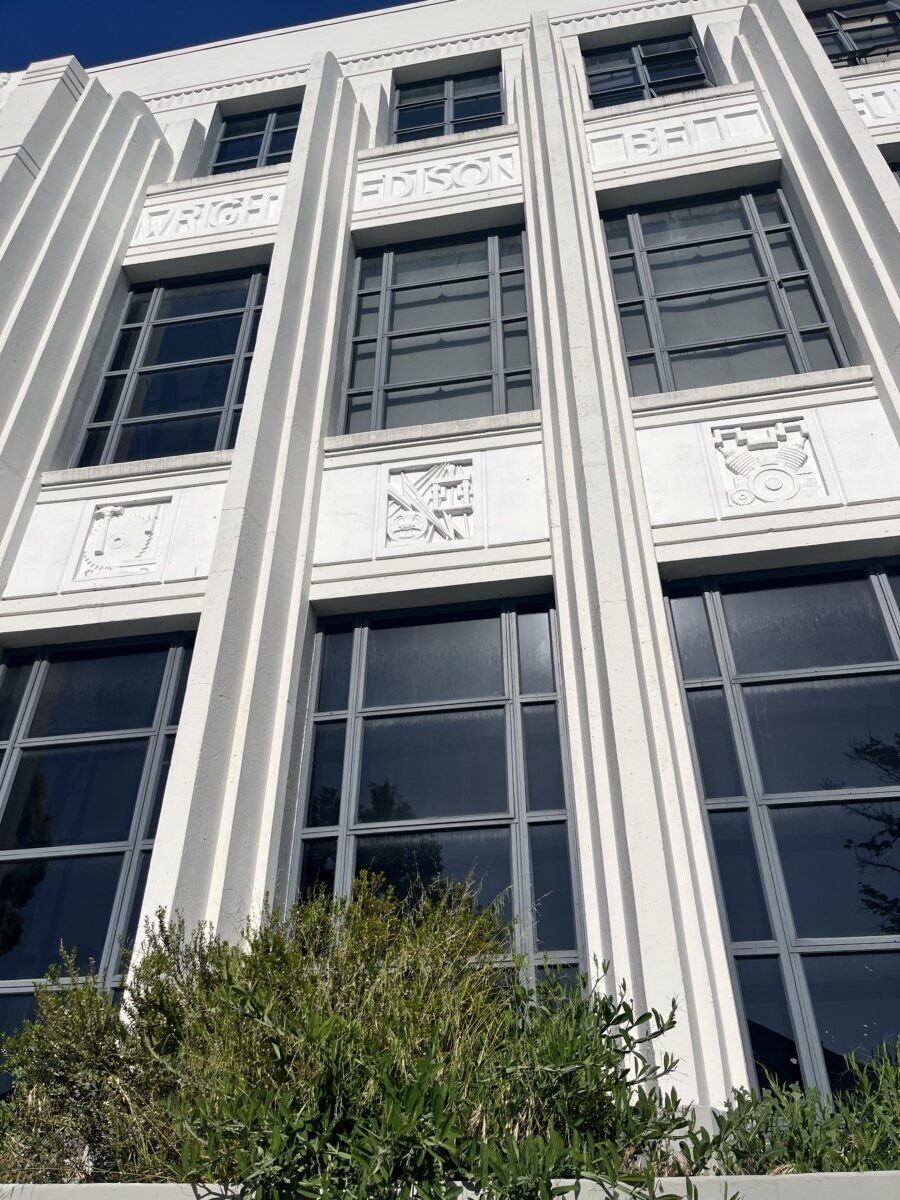
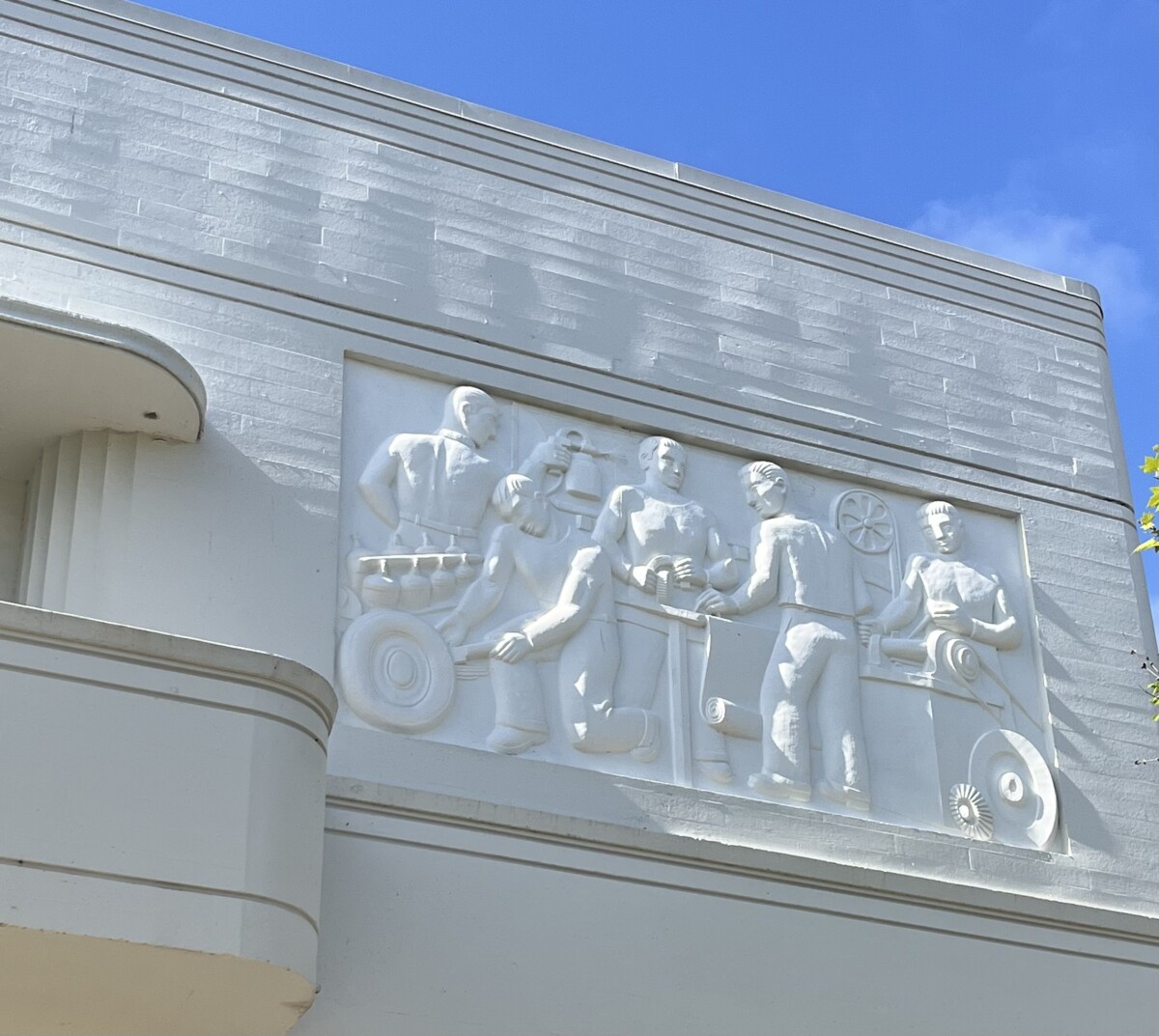
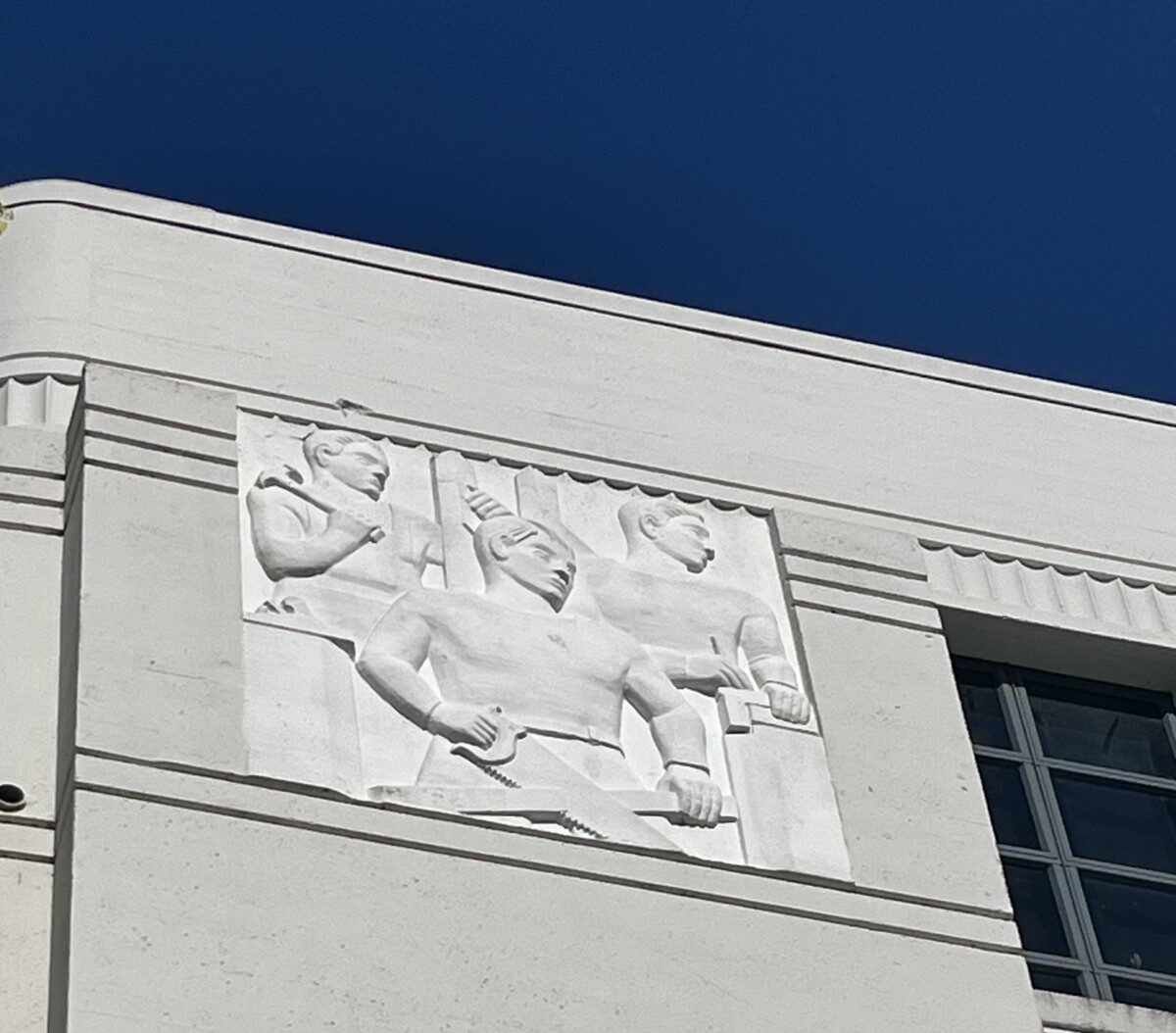
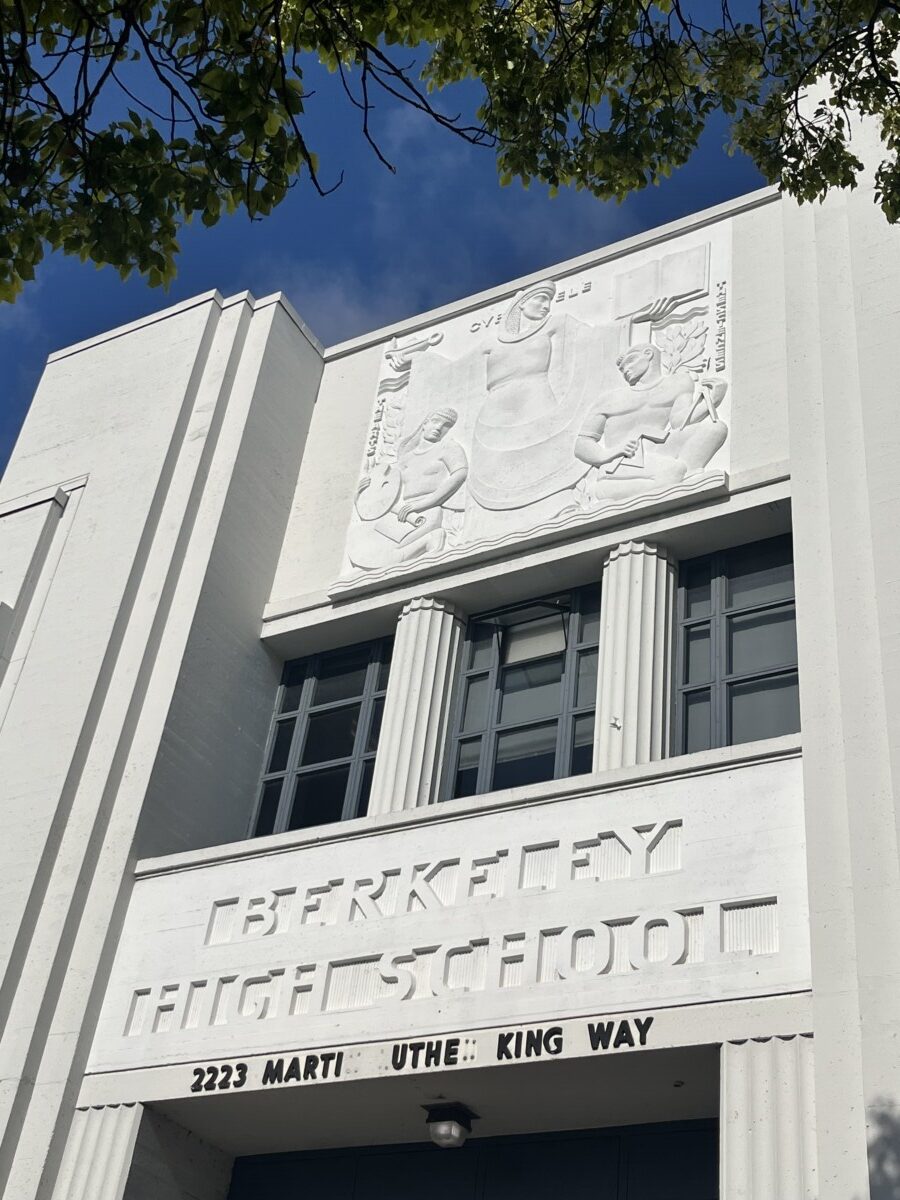
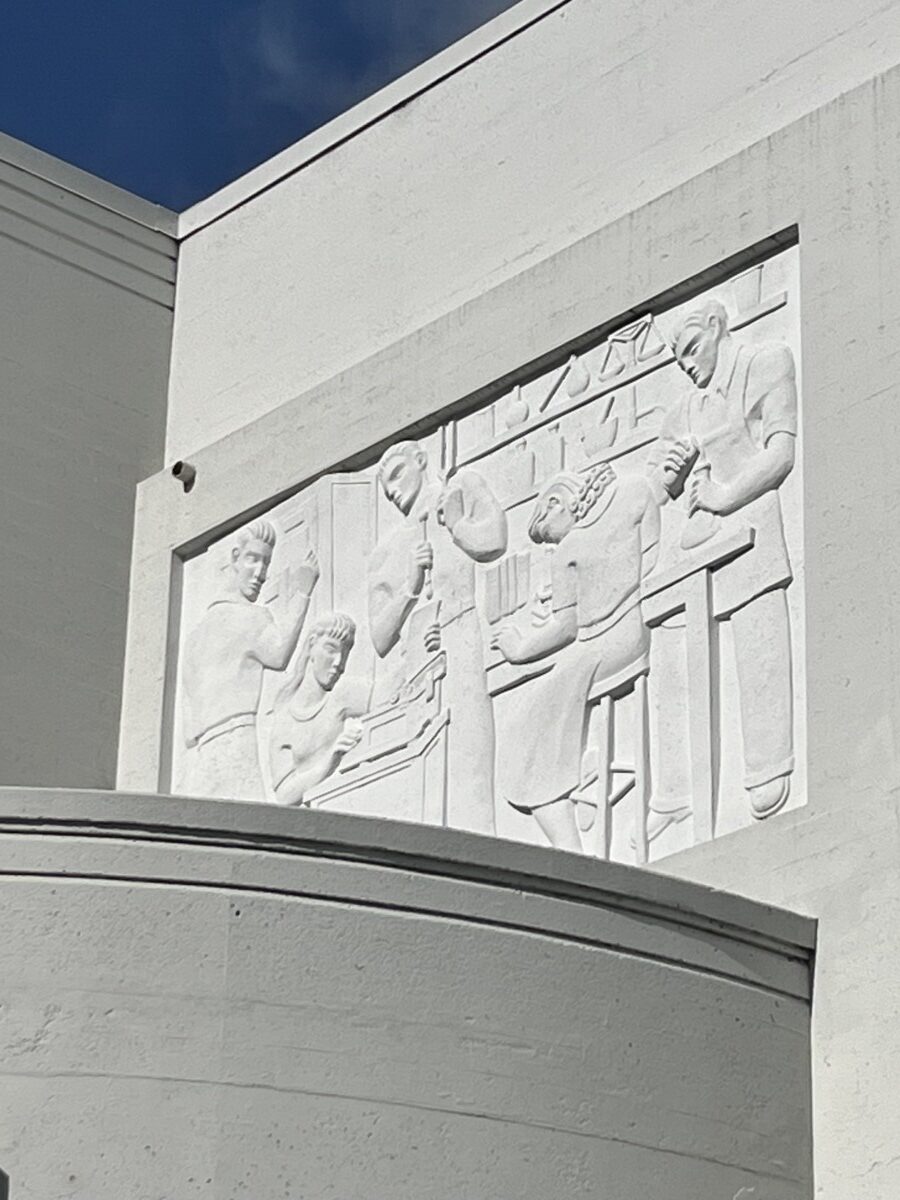
My last stop was Berkeley High School which has many bas relief panels. The ones on the community Theater depict the arts; the long panel shows “people of all races coming together through the arts” according to the Living New Deal website. On the other buildings are images related to various occupations and fields of study. They all look similar but were done by at least two different artists in 1940.